
Press Release Archives:
2025 |
2024 |
2023 |
2022 |
2021
2020 |
2019
Content is copyright of company represented. Page format, custom text and
images are RF Cafe copyright - do not distribute. Note: Beginning
March 2025, posting of press releases will cost $100 each for non-advertisers.

Sam Benzacar, of Anatech Electronics, an RF and microwave filter company, has
published his
August 2024 newsletter that, along with timely news items, features
his short op-ed entitled "Fixed-Wireless Access Is Finally Available, and People
Love It." His description perfectly describes the experience I have had with Verizon
5G
FWA Internet service since February of this year. My cost is $45/month, with a fixed
price guarantee of four years. Download speeds are in the 50-60 Mbps realm,
and upload is 6-7 Mbps. That fulfills my needs since I don't watch videos,
TV, or use other bandwidth-hogging services. If there have been any outages, I haven't
noticed, even when electric service is down during a storm. The asymmetrical data
rates Sam mentions have always been a mystery to me - why is that necessary? For
a while living in Pennsylvania, I had optical Internet and the download/upload speeds
were the same: around 600 Mbps. That was way more than I needed, but providers
no longer offer lower bandwidth options at a lower price. The fact is I could live
with 10 Mbps since my highest demand need is publishing my
RF Cafe and
Airplanes and Rockets websites.
A Word from Sam Benzacar - Fixed-Wireless Access Is Finally Available, and People
Love It
 By Sam Benzacar By Sam Benzacar
As fiber continues to be rolled throughout the country and cable faces a slow
death, another solution, fixed-wireless access (FWA), which relies on 5G, is making
significant inroads in bringing broadband to the masses. In fact, FWA accounted
for 90% of the broadband additions in 2022, even though it delivers speeds far lower
than fiber or cable and is only slightly less expensive. So, why would consumers
choose this option?
From my perspective, the adoption of FWA is that it eliminates wiring, whether
coax or fiber, both outside and inside the home. Carriers, primarily T-Mobile and
Verizon, make installing simple without carriers sending out a technician for every
new installation, costing them billions of dollars annually. So, they can offer
FWA with monthly costs ranging from $50 to $70. The provider mails a package to
the home that includes a router-modem combo and sometimes an external antenna. All
that's required is to put this "box" near a window, download an app, and create
a Wi-Fi SSID.
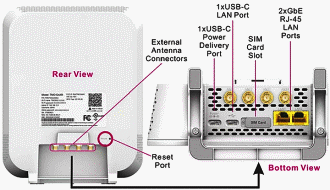 FWA is basically a point-to-point (or multipoint)
microwave by another name. It has been tried several times since the 1990s as a
solution for delivering TV, voice, and data, which ultimately failed for various
reasons. However, the technologies within 5G and its widespread deployment have
finally made it a viable alternative even in rural and underserved communities. FWA is basically a point-to-point (or multipoint)
microwave by another name. It has been tried several times since the 1990s as a
solution for delivering TV, voice, and data, which ultimately failed for various
reasons. However, the technologies within 5G and its widespread deployment have
finally made it a viable alternative even in rural and underserved communities.
What's the catch? First, speeds are lower than even the least expensive cable
plans and an order of magnitude slower than those of fiber. That's fine for most
people but not households with "heavy users," who could exceed what the limited
bandwidth offers. In some locations, optimum placement of "the box" (with its integrated
antenna) might not be possible, which would require an external (and its accompanying
cable).
In addition, in its current form, FWA has the same asymmetric service as cable
- much higher download than upload speeds. Finally, FWA shares 5G bandwidth with
mobile subscribers, so speeds might decrease when traffic on the network is heavy.
Nevertheless, according to recent reports, people with FWA are happier with this
solution than with what they had before. However, when the wireless industry eventually
widely deploys millimeter-wave frequencies, performance should increase dramatically,
perhaps rivaling fiber, the high-speed champion.
Deployment of millimeter-wave 5G has been a slow process, but it should eventually
be widely available, as mandated in the 5G standards. In short, FWS seems destined
to be the go-to choice for broadband delivery, replacing cable and competing only
with fiber where it's available.
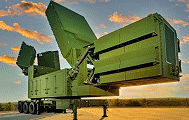 Replacement for Patriot
System Coming Replacement for Patriot
System Coming
The U.S. Army has awarded RTX Corp. a $2.09 billion contract for low-rate initial
production of the Lower Tier Air and Missile Defense System (LTAMDS), also known
as GhostEye. This next-generation radar will replace the current Patriot system,
offering 360-degree coverage and more than double the performance. Key features
include gallium nitride components, one primary and two secondary antenna arrays,
and the ability to detect and engage multiple threats simultaneously.
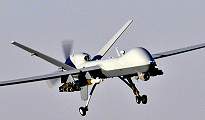 FAA To Rule on Beyond Visual
Line of Sight FAA To Rule on Beyond Visual
Line of Sight
The Federal Aviation Administration (FAA) has committed to meeting deadlines
for rulemaking beyond visual line of sight (BVLOS). BVLOS operations involve flying
aircraft or drones beyond the pilot's or operator's visual range, enabling more
extensive and sophisticated drone missions. These operations rely on GPS, telemetry,
and potentially artificial intelligence for navigation and control. Due to the complexity
and potential risks involved, special certifications are typically required to conduct
BVLOS flights. The FAA has outlined a timeline for implementing new BVLOS regulations
and intends to publish a Notice of Proposed Rulemaking (NPRM) by the end of the
year, with a final rule by January 2026.
 Antenna Paves the Way for
OneWeb Satcom Access Antenna Paves the Way for
OneWeb Satcom Access
Gogo Business Aviation has successfully connected its HDX antenna to the Eutelsat
OneWeb LEO satellite network, marking a major step towards the launch of its Gogo
Galileo broadband service later this year. The HDX antenna, designed for ground-based
testing, will soon undergo flight tests. Two antenna sizes will be offered: the
compact HDX for smaller aircraft and the larger FDX for heavier jets. Hughes Network
Systems manufactures both antennas in collaboration with Gogo. With power outputs
ranging from 110 to 330 watts, these antennas promise to deliver high-speed connectivity
to business aviation.
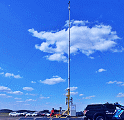 New System Provides Drone
Detection New System Provides Drone
Detection
Altitude Angel and NATS Services have launched Arrow, a system that detects and
tracks drones and other aircraft in lower-level airspace. This addresses a challenge
for traditional radar systems. Arrow was developed to improve safety by monitoring
all traffic, authorized or not. Its capabilities were demonstrated at Farnborough
Airport, where road-towable sensors provided a comprehensive view of the airspace.
Arrow is self-sufficient and uses solar power and a private network. This technology
represents a significant step in airspace management, enhancing safety and enabling
drone integration in busy areas.
Anatech Electronics Introduces a New Line of Suspended Stripline and
Waveguide Type RF Filters
Check out Our Filter Products
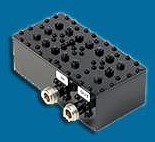
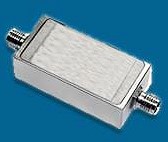
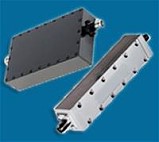
Cavity Band Pass Filters
LC Band Pass Filters Cavity Bandstop/Notch Filter
About Anatech Electronics
Anatech Electronics, Inc. (AEI) specializes in the design and manufacture of
standard and custom RF and microwave filters and other passive components and subsystems
employed in commercial, industrial, and aerospace and applications. Products are
available from an operating frequency range of 10 kHz to 30 GHz and include cavity,
ceramic, crystal, LC, and surface acoustic wave (SAW), as well as power combiners/dividers,
duplexers and diplexers, directional couplers, terminations, attenuators, circulators,
EMI filters, and lightning arrestors. The company's custom products and capabilities
are available at www.anatechelectronics.com.
Contact:
Anatech Electronics, Inc.
70 Outwater Lane
Garfield, NJ 07026
(973)
772-4242
sales@anatechelectronics.com
Posted July 31, 2024
|








 By Sam Benzacar
By Sam Benzacar
 Replacement for Patriot
System Coming
Replacement for Patriot
System Coming  FAA To Rule on Beyond Visual
Line of Sight
FAA To Rule on Beyond Visual
Line of Sight  Antenna Paves the Way for
OneWeb Satcom Access
Antenna Paves the Way for
OneWeb Satcom Access  New System Provides Drone
Detection
New System Provides Drone
Detection 




